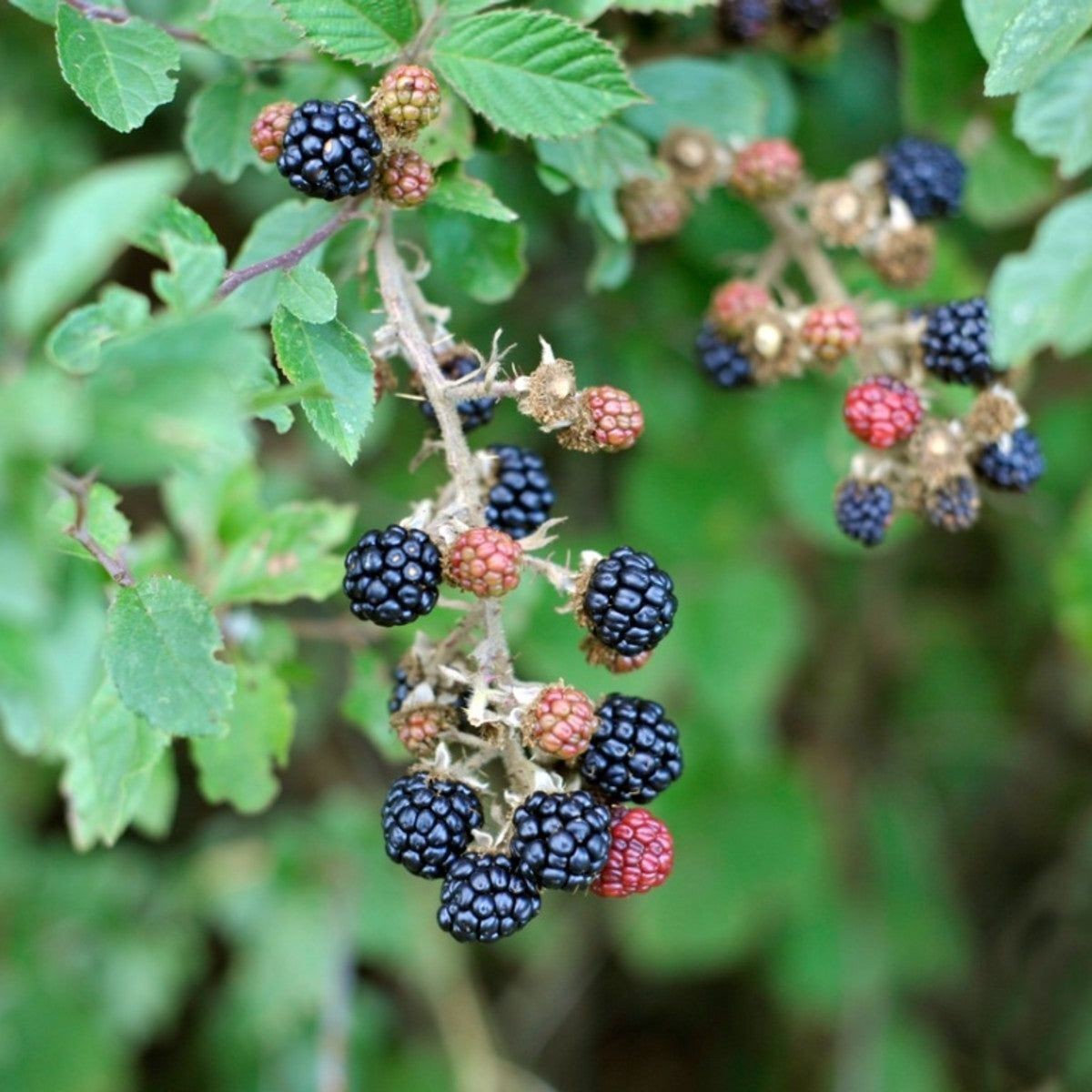 Common Names: Blackberry, Bramble, European Blackberry, Shrubby Blackberry, Wild Blackberry
Common Names: Blackberry, Bramble, European Blackberry, Shrubby Blackberry, Wild Blackberry
Scientific Name: Rubus fruticosus
Succession Stage: Early to Mid-Succession Accumulator
Blackberry (Rubus fruticosus) is one of the most recognisable pioneer plants in Australian landscapes.
Often found colonising disturbed or degraded sites — such as overgrazed paddocks, eroded gullies, or previously forested areas — it plays a role in stabilising soil and rebuilding organic matter, even though it is classed as an invasive species.
Typical landscapes where blackberry thrives share common traits: limited organic matter, degraded or eroded soils, and disrupted hydrology.
Its presence often signals a landscape in need of regeneration and balance.
Managing Blackberry
A mix of biological, mechanical, and ecological management approaches can help restore balance:
- Livestock intervention: Goats are highly effective blackberry grazers, and cattle will also browse on it as part of a mixed diet.
- Mechanical control: Slashing, mulching or raking can reduce biomass but require consistent follow-up.
- Adaptive grazing: Implementing time-controlled grazing helps prevent blackberry dominance.
- Increase diversity: Introduce trees, shrubs, and other forest species to encourage ecological succession.
- Build soil health: Add organic matter and aim for a balanced fungal-to-bacterial soil ratio.
- Biological control: The Blackberry Rust Fungus (Phragmidium violaceum) has shown mixed success since its release in 1991.
Making the Most of Blackberry
Despite its reputation, blackberry offers several uses:
- Soil indicator: Suggests soils low in calcium and potassium, high in iron and manganese, and generally low in organic matter.
- Livestock feed: Provides moderate nutrition, especially for goats, with 8–10% crude protein.
- Medicinal uses: Traditionally used to treat ulcers, skin infections, and diarrhoea; modern studies explore its antioxidant and anti-inflammatory properties.
- Edible fruit: The berries are highly versatile—eaten fresh, preserved, or used in teas and salads.
Original article credit to Tarwyn Park Training. Sign up to their newsletter here.









